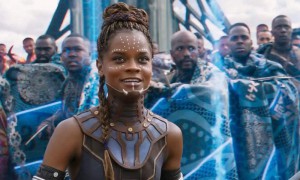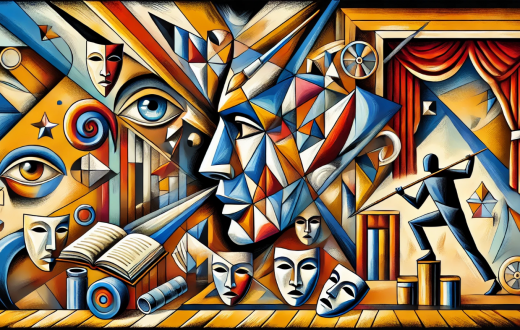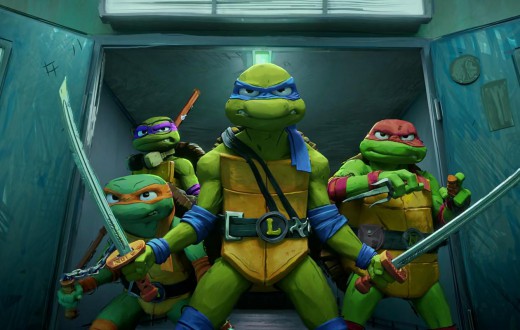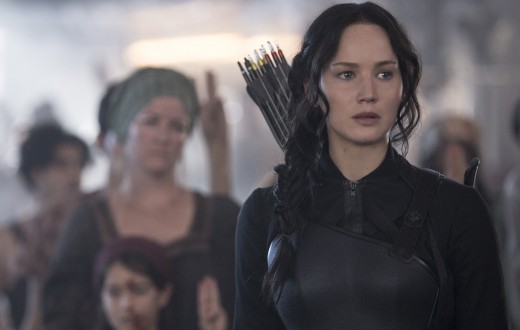There’s been a growing emphasis on storytelling in the entertainment industry. Whether it’s in film, television or theater, audiences are drawn to stories that are emotionally compelling, thought-provoking and memorable. Because of this, there’s a greater focus on diversity and representation in the entertainment industry. As audiences demand more authentic and different stories, actors from underrepresented groups are being given more opportunities.
Stories that include a variety of perspectives and experiences help to reflect the diversity of our society. I was just talking to my brother today about the tech field and how at his job, a lot of the employees and contractors are from outside of the United States. People who come to the USA from different backgrounds crave inclusivity.
This type of storytelling also provides a sense of validation and visibility for individuals who may feel marginalized or excluded in their daily lives. It can provide a sense of belonging and help to promote positive self-esteem, especially for children and young adults who are still in the process of developing their sense of identity.
Moreover, the entertainment industry has a significant impact on culture and societal norms. The stories we see on our screens and in theaters can shape our perceptions of the world and influence our attitudes and beliefs. This helps ensure that the narratives we consume reflect the world we live in and promotes understanding and acceptance of many cultures and communities.
Bollywood is the popular term used to refer to the Indian film industry, primarily based in the city of Mumbai (formerly Bombay). The name “Bollywood” is a play on the words “Bombay” and “Hollywood,” the American film industry.
With the increasing availability of Indian films in international markets, a small but dedicated audience in America began to take notice of Bollywood. This audience was primarily made up of Indian expatriates and their families, who sought out Indian films as a way to stay connected to their culture and heritage.
Quick overview: Bollywood films are known for their colorful, musical and extravagant productions. They often blend elements of drama, romance, action and comedy. The films typically include elaborate dance sequences, catchy songs and are known for their larger-than-life characters.
In recent years, Bollywood has seen a growing trend of films that tackle social issues and promote social awareness. The film Pad Man is based on the true story of a man who invented a low-cost sanitary pad-making machine to provide affordable menstrual hygiene products to women in rural India. The film addresses the stigma surrounding menstruation and aims to promote menstrual hygiene.
Bollywood has seen a growing trend of films that focus on societal issues and that touch on social awareness in the past few years. The movie Pad Man is based on the true story of a man who founded a machine that mass-produced low-cost sanitary pads for women in rural India. The movie conveys menstruation-related stigmas and aims to eradicate them.
A Bollywood film that addresses social and political issues is Article 15. The plot of the movie is inspired by the real-life events and follows a law enforcement officer who investigates the disappearance of three female residents in a small village. The film explores the themes of caste discrimination, corruption in law enforcement and social problems today in India.
Bollywood has also seen an increasing number of films that tackle mental health issues. The film Chhichhore explores the pressures faced by Indian students in their pursuit of academic success and how it can lead to mental health issues such as depression and suicide.
Bollywood has gained even more mainstream attention in America with the growth of streaming services like Netflix, Hulu and Amazon Prime. Many Bollywood films have also gained popularity for their crossover appeal, with American actors and musicians collaborating with Indian filmmakers to create cross-cultural projects.

The Changing Landscape of the Entertainment Industry
As a result of the ever-growing streaming platforms, audiences are no longer content with the limited perspectives and narrow representation that dominated traditional media, and they’re seeking out stories that reflect the world around them.
The storytelling doesn’t necessarily have to be fiction, or “based” on true events. Actor Stanley Tucci brought us to Italy, and now he’s bringing us to Mexico, led by Eva Longoria. You can catch Eva Longoria: Searching for Mexico on CNN.
This shift in audience expectations has had a profound impact on the entertainment industry, with studios and networks recognizing the need to create more varied content. The success of films such as Black Panther and Crazy Rich Asians has demonstrated that diverse stories can be commercially successful and have broad appeal. Similarly, shows like Pose and Master of None have received critical acclaim for their portrayals of underrepresented communities.
The demand for these types of stories has also led to a greater focus behind the camera, with more opportunities being created for women and people of color to direct, produce and write content. This not only ensures that wide-ranging stories are being told but also provides opportunities for those who have historically been excluded from the industry.

The Challenges
One of the most significant challenges actors face is the need to navigate the complexities of varied storytelling. This involves understanding and portraying characters from a range of backgrounds and experiences, often with limited or inaccurate representations in mainstream media. To overcome this challenge, many actors have turned to research and consultation with experts and community members to ensure they accurately portray the characters.
Another challenge is the need to break out of traditional casting limitations and overcome industry biases. For example, actors from underrepresented communities may face barriers to securing roles due to a lack of representation and the perpetuation of stereotypes. Because of this, many actors have taken advantage of opportunities to create their own content or collaborate with independent filmmakers and emerging platforms.
Despite the challenges, the demand for mixed storytelling has created new opportunities for actors to showcase their talent and connect with audiences in meaningful ways. For example, roles that were once considered “niche” or “unconventional” are now being recognized as valuable and important, leading to more opportunities for actors from underrepresented communities.
My advice to you is to open your mind and explore different worlds. Be open to new ideas and perspectives. When we engage with people from different backgrounds and learn about their cultures, we’re exposed to new ways of thinking, different values and beliefs and alternative approaches to solving problems. We can broaden our own thinking and challenge our own assumptions and biases. This can ultimately lead to personal growth and development, as well as a greater ability to collaborate and work effectively with others.








